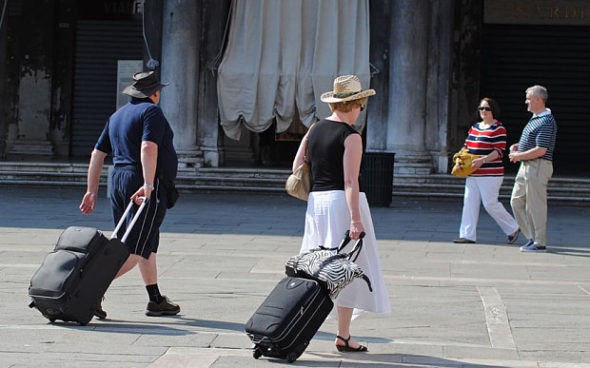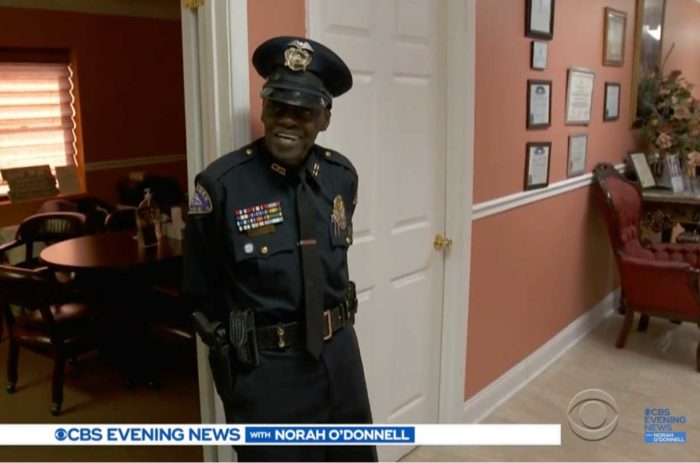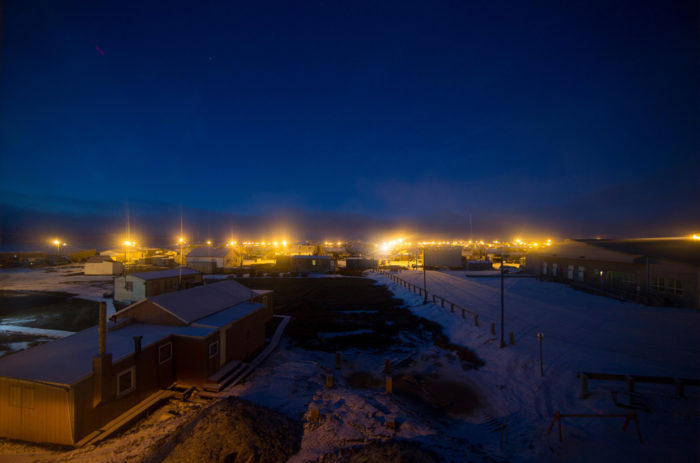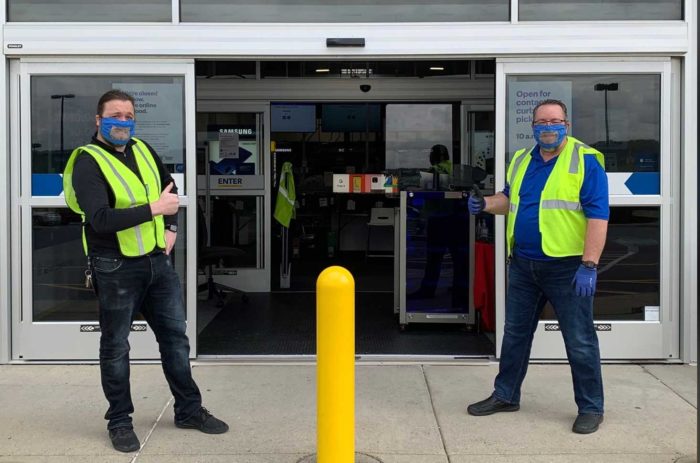 French farmers take sheep flocks to Eiffel Tower to protest ‘govt-protected’ wolves
French farmers take sheep flocks to Eiffel Tower to protest ‘govt-protected’ wolves
French farmers herded their sheep to the Eiffel Tower on November 27th to protest against the growing number of attacks on their flocks by wolves, which they argue are protected by the government.
The farmers brought around 250 sheep to central Paris to demand action from government ministers to stop the attacks on their flocks, which have increased dramatically in recent years.
One of the protesters was dressed as a wolf while carrying around a lamb. Another held a banner reading: “Today famers, tomorrow unemployed.”
The farmers and their sheep are due to meet with French Agriculture Minister Stephane Le Foll later on Thursday.
Wolves were hunted to extinction in France, like in many other European countries, but crossed over the Alps into France from Italy in the 1990s. They now number about 300 and are a protected species.
One of the predators was caught on camera within 250 km (155 miles) of Paris in April, The Local reported.
There have been 4,800 attacks on sheep by wolves so far this year – 1,000 more than in 2013, according to official figures from the French Sheep Organization (FNO), AFP reported.
“There is nothing natural about being eaten by wolves. We are against wolves from the moment they attack our farms,” said Claude Font, head of a sheep farmers association in the Auvergne region in central France. Although the wolves originally were confined to the southeast near the Italian border, they have now migrated to central and southwestern France.
The continued threat of wolf attacks on sheep is “an enormous daily stress, it is omnipresent and oppressive, farmers around me feel helpless. Those who wanted to overprotect them are going to kick themselves. The wolf reproduces and moves around very fast,” said Claire, a sheep farmer in the Alpine region of Drone, located in the country’s southeast.
The farmers also say that France’s so-called “wolf plan,” which pays farmers compensation for sheep killed by wolves, is a waste of money. It cost €15 million euros ($18.4 million) in 2012.
“We don’t want the money, we want to be able to do our job in good conditions,” said Michele Boudoin, secretary general of the FNO.
The farmers are asking for wolves to be removed from sheep breeding regions, and the right to shoot wolves immediately if their flock is attacked. They are also calling for the quota in the number of wolves they are allowed to kill to be scrapped, or at least increased from the current 24 wolves allowed annually.
The farmers are gaining some support from the French government. In June, Environment Minister Segolene Royal stepped into the debate.
“The damage to herders has become too great. The distress of the farmers and their families should be better taken into account,” she said in a statement.
But the wolves do have some friends in France. Patrick Boffy is head of Ferus in the Southern Alps, the first French region to see the wolf return in the 1990s. Ferus is an organization that was set up to help protect wolves, bears, and lynxes.
He says that in some places – such as steep, rocky terrain – farmers should simply leave. In other areas, they must learn to cohabit with the wolf.
“It’s a bit like asking what is the point of an eagle, or a piece of music, or a painting. The wolf is part of life. It returned naturally to France – the only southern European country where it had disappeared,” he told the BBC.
Venice seeks to ban noisy suitcases on wheels
They are assaulted on a daily basis by giant cruise ships, uncouth tourists, feral pigeons and flooding caused by high tides.
Now Venetians have declared war on a new foe – noisy suitcases on wheels.

American tourists in St Mark’s Square, Venice
Shopkeepers, cafe owners and residents say they are being driven half mad by the incessant rumble of visitors trundling their luggage along the city’s narrow alleyways and up and down delicate stone bridges.
The wheeled suitcases are essential in a city without roads, where tourists have to reach their hotels either by water bus or by walking.
Now Venice council wants to introduce a ban on luggage equipped with hard rubber wheels, forcing the city’s 27 million annual visitors to instead use suitcases that roll on air-filled, softer wheels that make less noise.
The authorities are concerned about “growing noise pollution” caused not only by tourists using wheeled luggage, but local businesses wheeling goods around on trolleys, the council said in a statement.
The daily rumble of wheeled suitcases was giving Venetians “serious discomfort” and also causing the “progressive deterioration” of centuries-old paving slabs, marble steps and foot bridges, it added.
The council, which is under special administration after a corruption scandal earlier this year forced the resignation of the mayor, wants to introduce the ban next May.
After that, anyone with a noisy, hard-wheeled suitcase will be liable to a fine of up to 500 euros ($615).
For a city wrestling with so many problems – an exodus of locals because of high rents and property prices, and a daily invasion of 60,000 tourists – the issue of noisy luggage may seem trifling.
“Is that true? … that’s crazy,” a French tourist told Il Gazzettino, a local newspaper, when told that his suitcase on wheels will be banned within a few months.
A young Italian woman pulling her suitcase along the banks of the Grand Canal said: “It seems to me to be a pretty stupid idea.”
But the council insists that the issue is a real one and that locals living near hotels and bed and breakfasts dread the moment when groups of tourists arrive and leave, dragging their heavy loads over the city’s stone paving stones, known as “masegni”.
The council admits that the new law will be hard to enforce, with thousands of tourists arriving by train, plane and boat every day, and that trolleys with pneumatic wheels are hard to come by.
The vast majority sold around the world have wheels made of hard resin or plastic.
The authorities hope that a firm will spy an opportunity to produce a new line of Venice-friendly suitcases.
“The law won’t come into effect until May, so hopefully by then one or two companies might start producing trolley suitcases with air-filled wheels,” said Maurizio Dorigo, the council’s planning director.
The new, hushed suitcases would benefit not only Venice but the historic centres of many Italian cities, he said. “The historical centres of lots of other places have the same problems as us – Rome, Florence, Siena. There needs to be a way for tourists to wheel around their luggage without making that crazy noise.”
Long-suffering Venetians will be exempt from the new law and will be free to clunk their noisy suitcases up and down the canal banks.
The first photograph of a human being
The picture below, the earliest known photograph to include a recognizable human form, was taken in Paris, France, in 1838 by Louis Daguerre. The human in question is standing in the bottom-left of the photograph, on the pavement by the curve in the road. He is having his boots shined.
 The exposure time for the image was around seven minutes, and although the street would have been busy with traffic and pedestrians, it appears deserted. Everything moving was too fast to register on the plate.
The exposure time for the image was around seven minutes, and although the street would have been busy with traffic and pedestrians, it appears deserted. Everything moving was too fast to register on the plate.
The exception is the man at the lower-left who sat still long enough to appear in the photograph. The person cleaning his boots is also visible, although not as distinctly.
It has been speculated that instead of a shoeshine boy, the man stood at a a pump. However, comparison with another image taken by Daguerre of the same spot at noon reveals boxes used to hold brushes and polishes.
Like every Daguerreotype — the first publicly announced photographic process, and named after Daguerre — the photograph was a mirror image. Here is the image reversed back to show the view as Daguerre saw it:
 The street is the Boulevard du Temple, part of a fashionable area of shops, cafés and theaters. It was nicknamed the “Boulevard du Crime” because of the many crime melodramas playing in its theaters. It later lost many of these when Baron Haussmann, under the instructions of Napoleon III, remodeled and modernized Paris, removing the narrow, dark and dangerous streets of the medieval city and replacing them with parks and open spaces. This process began in 1853.
The street is the Boulevard du Temple, part of a fashionable area of shops, cafés and theaters. It was nicknamed the “Boulevard du Crime” because of the many crime melodramas playing in its theaters. It later lost many of these when Baron Haussmann, under the instructions of Napoleon III, remodeled and modernized Paris, removing the narrow, dark and dangerous streets of the medieval city and replacing them with parks and open spaces. This process began in 1853.
From London’s Daily Telegraph.



